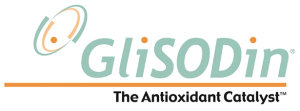-
Ingredient SolutionsQuickly narrow your search. Browse products in our sortable catalog. View Catalog
-
ApplicationsQuickly narrow your search. Browse products in our sortable catalog. View Catalog
-
ResourcesRecently Posted
-
PLT People & Planet
-
About
Our international network, passionate team of experts and extensive industry knowledge is what sets us apart.
 Seth FlowermanCEO
Seth FlowermanCEO
Clinical Research Regarding GliSODin® and Sun Exposure / UVB

Clinical Research Regarding GliSODin® and Sun Exposure / UVB
GliSODin’ s benefits protecting cells against oxidative stress are also supported by three studies looking at the effects of sunlight and Ultraviolet Rays (UV) on the skin, inducing photo-oxidative stress.
The latest study, UV Study 3, accepted for publication by the European Journal of Dermatology in May 2007, was a randomized double-blind study with 50 participants. Using a UV light, researchers created photo-oxidative stress on the skin, causing a burn and measuring the change in the color of the skin (redness) on the inner-forearms of healthy subjects.
They conducted the UV stress test before starting supplementation with 500 mg of GliSODin or placebo and repeated it each week for four weeks during supplementation. After using GliSODin, a significantly greater amount of UV exposure was required to create the redness and burn on the skin. This was not seen in the placebo group.
The researchers concluded that GliSODin appears to effectively help protect against oxidative stress resulting from exposure to the UV radiation, particularly for fair-skinned (phototype II) people.
UV Study 2 was an open clinical trial conducted by forty dermatologists in France. 150 volunteers where chosen based upon their susceptibility to flushing and burns and other oxidative stress reactions caused by exposure to the sun. The participants took 500mg of GliSODin daily over a 60 period, and did not change their sunbathing routine, including use of their regular sunscreen (Index 20-100). This preliminary study suggests that the antioxidant properties of GliSODin may help support skin health against photo-oxidation by oxidative stress. The results of this study led to the double-blind clinical above.
UV Study 1 was a pilot trial with 15 patients that easily burn, have hypersensitivity to the sun or even problems of sun disease. 500 mg of GliSODin were administered per day for 60 days, and the patients reported their experiences with the product and sun exposure.
After three to eight weeks of normal sun exposure, the skin situation was very satisfactory in all volunteers. As opposed to the previous summers, they did not present sunburn, flushing or skin rash as would be normally expected. The results of this study led to the second trial.
UV Study 3 “Evaluation of the Effect of GliSODin on the Intensity of Actinic Erythema,” M. Mac-Mary, J. Sainthillier, P. Creidi, J.P. Series, F. Vix, Ph. Humbert, presented at the CARD (Annual Congress of Dermatological Research) meeting in Brest, France, May 28th 2005
UV Study 2 “GliSODin and Exposure to the Sun,” an open study conducted in France on 150 patients by 40 dermatologists following a protocol compiled by Catherine Laverdet, M.D., Nadine Pomarede, M.D. and Catherine Oliveres-Ghouti, M.D. Sponsored by ISOCELL Nutra, France. March 2005
UV Study 1 “GliSODin Sun pilot Trial,” an open study conducted in France on 15 patients presenting fragile skin, hypersensitivity to the sun or even problems of sun disease, conducted by Catherine LAVERDET, MD, Dermatologist, Attachee de Consultation des Hopitaux de, Paris. July-September 2003














